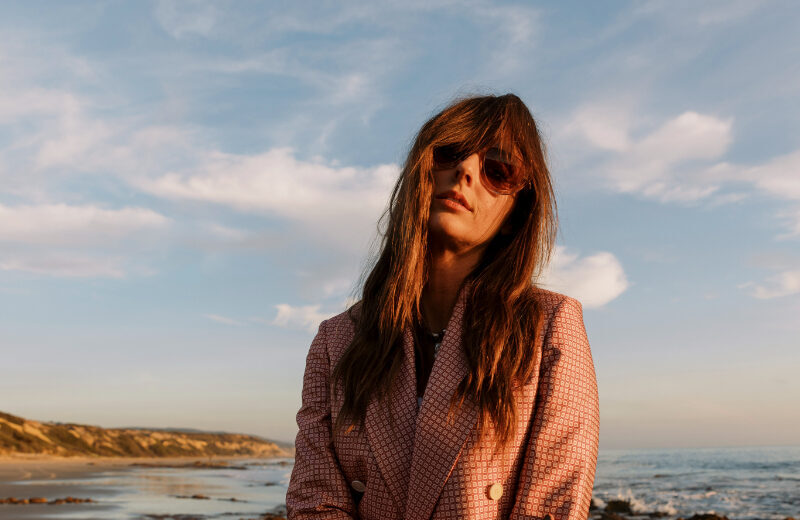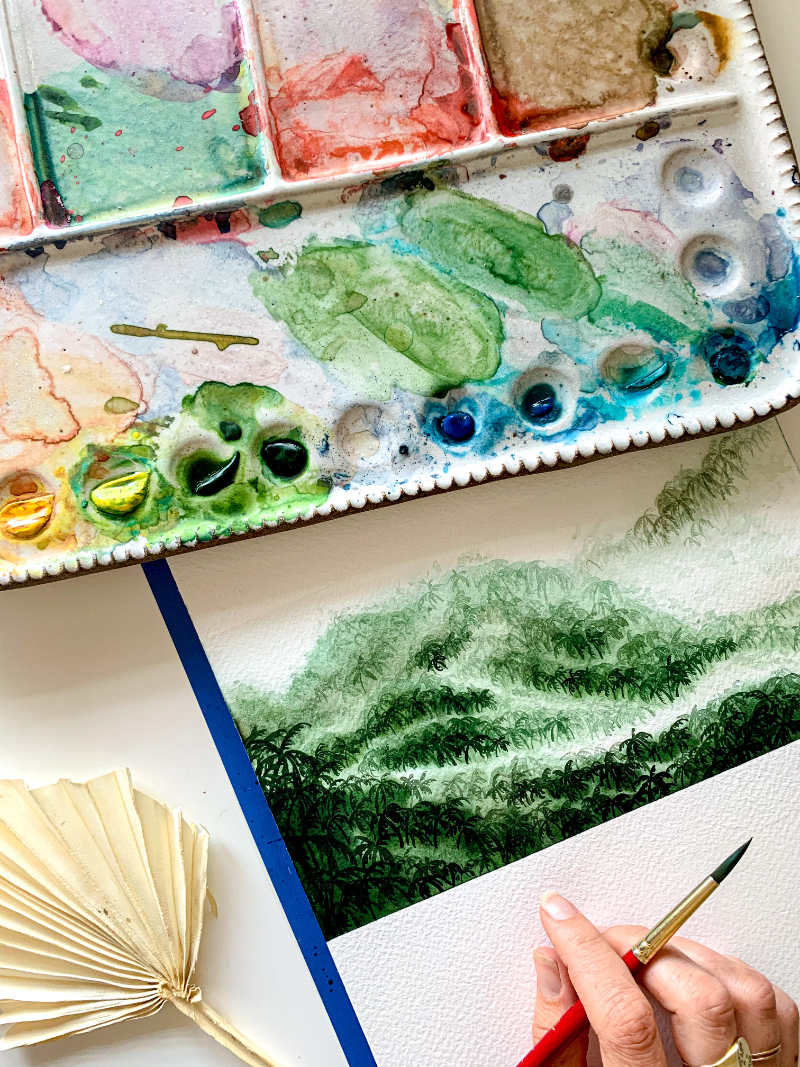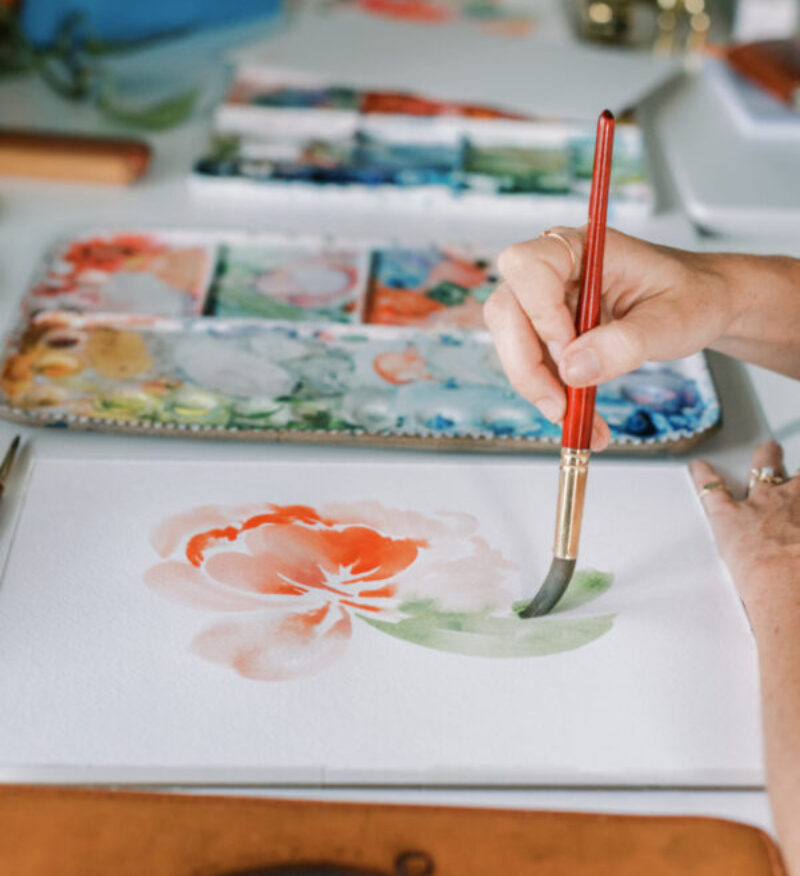When I first picked up a brush, I thought watercolor would be easy. Just water, pigment, paper. How complicated could it be? (Spoiler: very.) What I didn’t realize back then was how many little watercolor lessons I would learn the hard way. The spills, the blooms, the warped paper, the brushes that shed more than my dog. It was all part of my journey. And honestly? I wouldn't trade it.
But since you’re here, I’d love to save you a little heartache. So today, I’m sharing five watercolor lessons I learned the hard way, so you don’t have to. Trust me, these tips will save you frustration, wasted supplies, and probably a few frustrated tears.
Let’s dive in.
Water Is Sneaky (and Sometimes a Little Rude)
If watercolor had a personality, it would definitely be that unpredictable friend who’s both fun and slightly chaotic. One minute, everything’s going great. The colors are blending beautifully, your wash is smooth, and you’re feeling like a pro. Then suddenly, an extra drop of water sneaks in and your perfect sky wash turns into a backrun mess.
I had to learn (after many failed paintings) that controlling your water is one of the most important watercolor lessons. The balance between pigment and water is delicate. Too much water floods your paper, causes blooms, or pushes pigment where you didn’t want it. Too little water leaves harsh edges and streaky washes.
The trick? Practice controlling how much water is in your brush before you even touch the paper. (I always keep a scrap piece of paper nearby to test first.) Pay attention to how your brush holds water. Some brushes hold more than others. Tilt your paper slightly to help water move in the direction you want.
Even now, water still surprises me (sometimes rudely), but knowing how it behaves has made all the difference in my watercolor art.
Making mistakes is part of learning. In this blog, I share 5 common watercolor flower mistakes (and how to fix them) so you can keep growing with confidence

Cheap Supplies Will Break Your Heart
When I first started, I bought the cheapest supplies I could find. Because why spend a ton on something I might not even be good at, right? Big mistake. This is one of those watercolor lessons I wish someone had told me upfront.
Cheap watercolor paper pills, warps, and soaks up pigment unevenly. Inexpensive paints often don’t have enough pigment, so your colors end up dull or muddy. And don’t even get me started on bargain brushes. They shed bristles everywhere and never hold a point. Ever pull a brush hair out of a painting with tweezers before? Not fun, take my word for it.
The thing is, you don’t need to buy the most expensive supplies to create beautiful watercolor art. But investing in decent, student-grade or artist-grade materials makes learning so much smoother. Your washes will look better, your colors will sing, and you’ll spend less time fighting your tools.
If you want a more in-depth breakdown on good beginner supplies, check out my FREE Beginner's Guide to Watercolor E-book. I packed it with tips to help you avoid the supply mistakes I made.
Waiting is an Art Form (That I Had to Learn the Hard Way)
Patience is not my natural gift. I’m the type who wants to jump into the next layer before the first one is even dry.
One of the most valuable watercolor lessons I’ve learned is that waiting is part of the process. Watercolor is unforgiving when you rush. If your first layer is still damp, adding more paint will cause unwanted blooms, muddy colors, or accidental lifting.
Now, I treat drying time as a built-in pause. I walk away, make some tea, stretch, or work on a different section. This simple habit has improved my watercolor art more than I ever expected. The layers stay crisp, the details are sharper, and the final result feels intentional (instead of slightly panicked).
Learning to wait has made my entire creative practice better. Sometimes the best watercolor art ideas happen while you’re waiting for paint to dry.
That One Brush You Thought Was “Useless”? Total Game-Changer Later
In the beginning, I thought I only needed one or two brushes. A round brush for everything. And while round brushes are amazing (I still love my trusty size 6 and size 16), there are certain techniques that different brushes handle so much better.
For example, I once bought a flat wash brush and had no idea what to do with it. It sat unused for months. But later, when I started practicing large skies and even washes for my watercolor landscapes, that flat brush became my go-to tool. It made large, even washes so much easier.
One of the watercolor lessons I share with my students is to explore your tools. Even the ones that seem intimidating. Try different brushes, practice with different strokes, and experiment with new techniques. You might discover that brush you thought was useless is actually perfect for adding texture, lifting highlights, or creating sharp edges.
If you’re feeling unsure about which brushes to use, I break down all my favorites in my blog The Ultimate Guide to the Best Watercolor Brushes. You’ll learn my top picks and tips to help you confidently choose the right brushes for your style. Prefer to watch? Check out my YouTube video!
You Will Accidentally Drink the Paint Water (At Least Once)
This one’s a rite of passage. At some point, every watercolor artist will accidentally take a sip of their rinse cup instead of their tea or coffee. If you say it’s never happened to you, I’m not sure I believe you.
It’s one of those watercolor lessons that teaches you to keep your rinse water far away from your drinking cup.
While this lesson might be a little funny, it also reminds me not to take my art practice too seriously. Mistakes happen. Watercolor art ideas don’t always work out. But part of the joy is laughing at those small accidents and moving on.
Bonus: My Favorite Happy Accidents
While I’ve shared a lot of watercolor lessons that came from mistakes, I have to say some of my favorite art painting ideas watercolor has given me came from happy accidents.
A bloom I didn’t plan turns into a beautiful texture for a flower petal. A color mix I thought would be awful ends up creating the perfect shadow tone. An accidental splatter adds unexpected movement to a landscape.
Watercolor has a mind of its own. That’s part of its magic. And honestly, learning to embrace those surprises has made me a better artist (and a much more relaxed one). Some of my best watercolor art ideas have come from letting go of rigid control and letting the paint play a little.
Did you know I’m writing a children’s book? In this blog, I share how the process of writing and illustrating it has actually helped me grow as an artist in surprising ways.

Want More Watercolor Lessons Without the Painful Trial and Error?
The truth is, I’ve learned dozens of watercolor lessons over the years. Way more than I can fit into one blog post. But the good news is, you don’t have to figure it all out the hard way like I did.
That’s exactly why I created resources like The Art Within, my art and style school course where we go way beyond watercolor. You’ll learn drawing foundations, perspective, color theory, composition, and how to develop your own personal style because art isn’t just about mastering the medium. It’s about discovering your voice.
And if you're looking for a deep dive specifically into watercolor, my best-selling how-to books are packed with watercolor art ideas, step-by-step tutorials, and projects you can actually finish. I even created the Everyday Watercolor Companion Course, a video sidekick that walks alongside my books to help you really build confidence with your art painting ideas watercolor-style.
Of course, if you’re just getting started, my FREE Beginner's Guide to Watercolor E-book is a perfect place to begin. I created it to help you skip the most common beginner mistakes (the ones I definitely made).
At the end of the day, watercolor will always surprise you. That’s what makes it so rewarding and sometimes so frustrating. But with each layer, each bloom, each “oops,” you’re learning and growing. And that’s the best watercolor lesson of all.












+ show Comments
- Hide Comments
add a comment